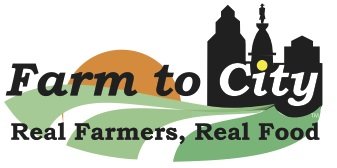Fall Seasonal Market Guide
Ipomoea batatas, a tuberous root from the morning glory family
Sweet Potatoes
Botanically speaking, this is not a potato, and it's not a yam either, although it obviously has some similarities and can be prepared in similar ways.
It sounds counterintuitive but cooking sweet potatoes with delicate amounts of strong spices like cayenne, curry powder, star anise, or ginger makes them taste even sweeter.
In the Viridis culivar group of Brassica oleracea, very closely related to cabbage and broccoli
Collard Greens
Probably the largest of the dark leafy greens that come to market, farmers have to space them apart 18 inches down the row, and the rows themselves should be spaced out at least three feet apart, just to have enough room for their giant leaves.
The traditional way to cook them is to tear them apart by hand into a big pot on the stove, add an onion and a piece of smoked meat, like bacon or ham hock, cover with a lid and cook on low heat for a long time, the longer the better.
Another Brassica olearacea, it is sometimes called Roman broccoli or Roman cauliflower
Romanesco
A real conversation piece at the market and at the holiday table, this can be substituted in any recipe for broccoli and cauliflower, but expect a nuttier, sweeter, crunchier flavor.
That mesmerizing arrangement of florets is called a fractal, a mathematical pattern that keeps repeating itself; in this case the fractal repeats a Fibonacci sequence of numbers, the same pattern found in the heart of sunflowers and the arms of spiral galaxies.
The reproductive, or fruiting, body of the fungus; most edible mushrooms have gills, which help disperse the spores
Mushrooms
Most of the mushrooms that come to market are spawned and harvested from a substrate, which is a blended base of moist decaying matter like straw, wood chips, and coffee grounds; other mushrooms at market are foraged from the woods.
Varieties commonly found at our markets: shiitake, oyster, cremini and portabella, king trumpet, lion's mane, maitake and, when in season, chanterelles, morels and chicken of the woods
Brassica napus, a hybrid between cabbage and turnip
Rutabaga
An underrated root vegetable that can be a great addition to hearty soups and stews, mashed like potatoes, or roasted with other root vegetables like carrots and parsnips; it has an aromatic, buttery, sweet and starchy flavor.
It also has a fun history: along with its cousin the turnip, the rutabaga was one of the original jack-o-lanterns, a tradition that began in northern England, Ireland and Scotland in the 1800.
Different members of the Cucurbitaceae family, same family as pumpkins, squash and cucumbers
Ornamental Gourd
These funny little creatures are no strangers to farmers' markets: farmers have been growing and cultivating gourds since 13,000 BCE. Now mainly used as mere autumnal decor, these kinds of gourds have played an important part of human civilization. They were used to make cups and bottles, toys and jewelry, and musical instruments like flutes, drums and maracas.
Illustrations by Jacqueline Quinn

